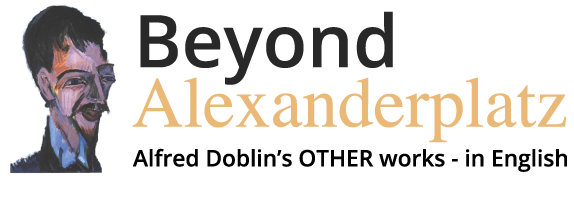New Doblin Portrait
The British artist Laurence Whitfield, a long-time resident of the Swabian region of south-west Germany, has been building a gallery of portraits of famous figures who have some connection to Swabia. Laurence invited me to provide some biographical text to accompany his new portrait of Döblin.
Laurence Whitfield’s portrait of Döblin
The portrait and text can be seen in the context of the whole project at http://whitfield-net.de under the ‘Project’ tab. Döblin occupies 27th place, between Albert Einstein and Hermann Hesse.
Here’s the direct link to the portrait and text: http://whitfield-net.de/elarged-html/alfred_doeblin.html .
And for the convenience of readers, here’s a copy. (Always go straight to Laurence’s website for the original!)

Baden-Baden was the first stop on Alfred Döblin’s return to Germany after 13 years of exile. The inveterate big-city writer, now a French citizen, an officer with the Occupation Authority, lived through the winter of 1945-46 by himself in a bare room in a near-silent town with empty bookshops and little to eat. His official task was to approve or veto publication licences; his personal mission was to bridge the chasm separating the propagandised minds of the population and the spirit of the real (exiled) Germany. But the “formerly German” Berlin gadfly was now a marginal figure: his writings drew little interest; the French uniform alienated his contacts; minds used to running on slogans proved hard to engage with.
This old man (now in his late sixties) persisted: the new journal Das goldene Tor appeared in October 1946. The Berlin Academy of Arts reinstated him. He had a fortnightly spot on prime-time Südwestfunk. Then ill health limited his activity, and from 1953 he spent long periods in sanatoria in Baden-Baden, Freiburg and elsewhere, constantly short of funds.
Döblin lived just long enough to see his last novel Tales of a Long Night published (in East Berlin). He died in Emmendingen on 1 July 1957.
– Chris Godwin August 2020


